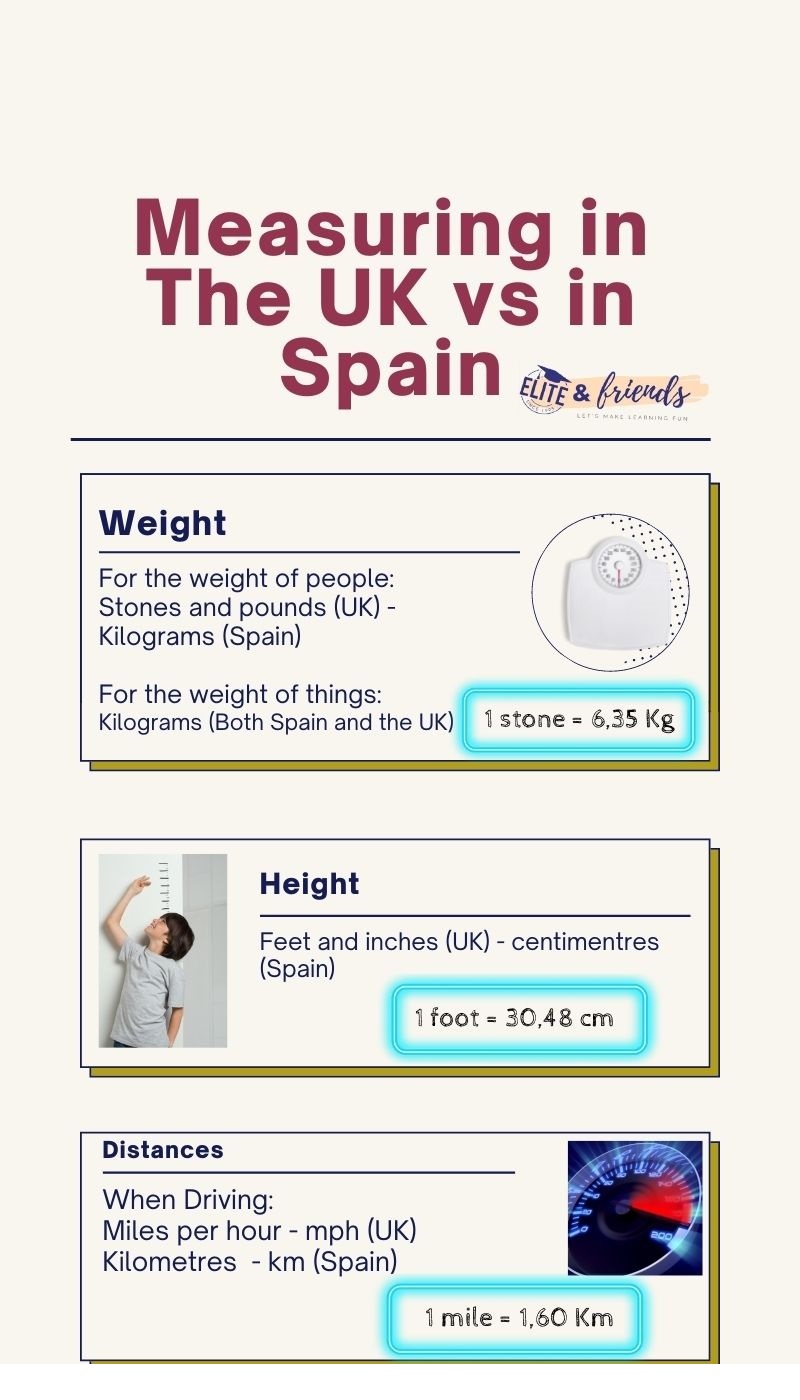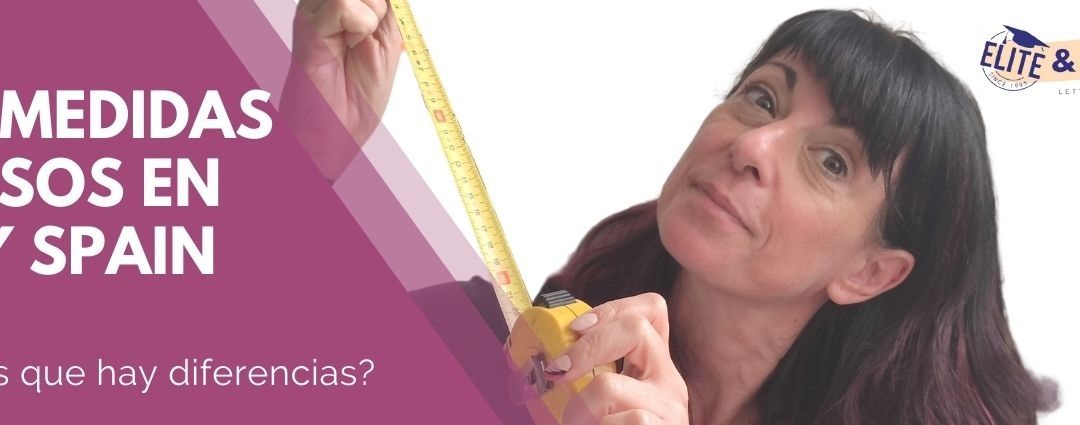Other than constantly needing to carry a calculator, it’s a good idea to learn about how other countries measure things like height and weight. This is a tricky but essential thing to know when learning about the culture of a different country.
Now that you think about it, why does Spain use kilograms and the UK use stones and pounds?
Well, because of something called the metric and imperial measuring systems.
Keep reading to find out why this matters and how to measure weight, distance and height like a British person!
Weight – Peso
Stones and pounds would be used to measure the weight of people and kilograms would be used to measure the weight of things (like food for example).
*Image comparing ways of measuring weight between UK and Spain. Perhaps two separate images – one for measuring things, another for people. Although things possibly not needed…*
Examples:
Weight of people
Anna: “I weigh 10 stone and 4 pounds.”
As you can see in the sentence above, Anna weighs 10 stone and 4 pounds. In other words, or in other measurements, 65.3 kilograms!
To convert from kilograms into stones, you have to divide by 6.35.
Weight of things
Person A: “I would like to buy 2 kilograms of oranges.”
Person B: “No problem. That will be £3.50, please.”
There is no need to convert measuring systems in this situation, as Spain also uses kilograms to measure the weight of things.
Height – altura
Example:
Pablo: “I am 5 foot 4 inches tall.”
As you can see in the sentence above, Pablo is 5 foot 4 inches tall.
In Spanish terms, he would be 162.5 centimetres tall!
Distance – Distancia
In the UK, we would measure distances in miles.
For example, if you were driving, you would be travelling in miles per hour.
However, in Spain, you would measure distances in kilometres. Thus, if you are driving in this country you will be travelling in kilometres per hour.
Example:
Jose: I have to travel 650 miles! I’ve got to go to Paris for a business trip.
Jose would be travelling about 1000 kilometres to get to Paris for his business trip!
1 kilometre is roughly 0.62 miles.
Practical note: Speed limits when driving:
Another big difference between Spain and the UK is the speed limit when driving.
Below, you can see this handy grid on the speed limit in different locations in Spain. Obviously each country has their own speed limits and for now, we’ll focus on Spain (from where we are writing this blog). So, if you are a foreigner in Spain, take this into account to avoid being fined:
SPEED LIMITS IN SPAIN
|
On motorways |
120km/h |
75mph |
|
On dual-carriageways and non-toll motorways |
110km/h |
68mph |
|
Away from built-up areas |
90km/h |
55mph |
|
In towns |
50km/h |
30mph |
Check out our video with more examples and graphic explanations of the different units of measures in the UK and Spain
Here’s a summary of this article:

Suscríbete a mi comunidad y llévate la guía de idioms con trucos y método infalible para retenerlos.
CON UN ESPECIAL DE IDIOMS PARA HABLAR DE RELACIONES PERSONALES
Con esta guía conseguirás:
- * Reconocer los idioms, esas expresiones idiomáticas típicas del inglés para que sorprendas incluso a los nativos con tu "natural speaking".
- * Comprender el significado de esas expresiones aunque no se parezcan en nada al español.
- * Tener un método eficaz que SI funciona para retener los idioms en tu mente. Aprender los idioms más comunes para hablar de relaciones personales.




Comentarios recientes